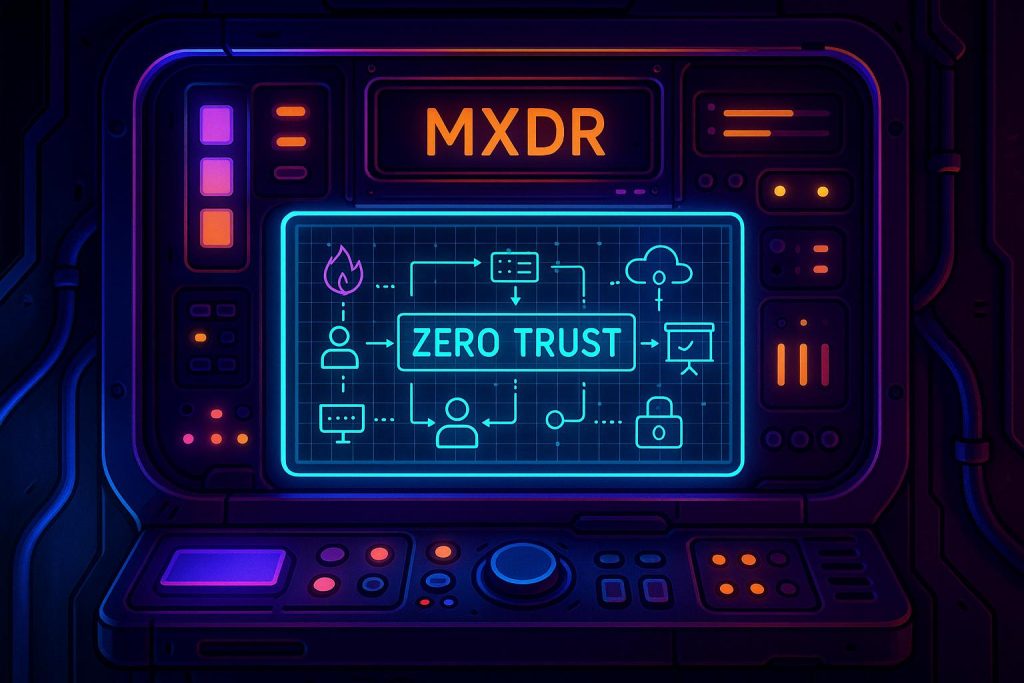Listen to the article
Managed Extended Detection and Response (MXDR) is emerging as a vital enabler for organisations striving to operationalise zero trust architectures, overcoming resource constraints and enhancing threat detection, response, and resilience.
Maintaining organisational resilience in the face of increasingly sophisticated cyber threats remains a top priority for business leaders. While zero trust has been a prominent cybersecurity philosophy for several years, fully operationalising a zero trust architecture continues to challenge many organisations, particularly due to limited resources and time constraints faced by CIOs and CISOs. Beyond the imperative of security itself, executives seek to safeguard operational continuity, reputational integrity, and financial stability against the potentially devastating impacts of breaches.
Zero trust operates on the core principle of “never trust, always verify,” rejecting implicit trust for any endpoint, user, or application. It segments networks into isolated zones to contain threats and strictly enforces least privilege access, granting users only the permissions essential for their roles. This protective mindset anticipates threats both internal and external to the organisation’s digital environment. The National Institute of Standards and Technology (NIST) formalised these concepts in its Special Publication 800-207, providing a recognised framework and implementation roadmap for zero trust architectures that emphasise protecting resources over traditional network perimeter defence. Similarly, the Cybersecurity and Infrastructure Security Agency (CISA) offers a Zero Trust Maturity Model to guide organisations in adopting these principles comprehensively.
In this context, Managed Extended Detection and Response (MXDR) emerges as a crucial operational enabler for zero trust. MXDR integrates advanced threat detection technologies with human cybersecurity expertise to deliver a continuous, proactive security posture. Unlike traditional reactive measures, MXDR actively hunts for threats, triages security alerts, and orchestrates rapid incident responses to contain breaches before they escalate. This capability extends zero trust’s emphasis on network micro-segmentation and least privilege by continuously validating that controls are effective and identifying any policy violations or anomalies in real time.
For example, if an employee’s usual login from an office environment suddenly shifts to an unexpected foreign location, MXDR can flag this behaviour, triggering automated responses such as re-verification or session termination. By collecting and analysing telemetry from across endpoints, identities, applications, networks, cloud platforms, and threat intelligence feeds, MXDR provides CISOs with a unified, contextualised view of the organisation’s attack surface. This visibility is vital to enforcing zero trust policies effectively and closing gaps that could otherwise be exploited by adversaries.
Beyond threat detection, MXDR often leverages Security Orchestration, Automation, and Response (SOAR) technologies to automate routine security tasks, accelerating response times and reducing the burden on internal teams. This automation helps scale security operations and shrink the dwell time of threats, thereby limiting the potential damage from breaches. Moreover, MXDR services typically complement and extend the capabilities of internal Security Operations Centres (SOCs) or those managed by service providers, offering 24/7 monitoring, advanced telemetry correlation, and enhanced incident governance aligned with business risk. This symbiotic relationship amplifies the organisation’s capacity to uphold a robust zero trust architecture.
Industry leaders like Logicalis highlight the challenges of implementing zero trust frameworks given resource constraints and the need for specialised skills. By partnering with providers experienced in zero trust and MXDR, organisations can align their security posture with industry standards such as NIST SP 800-207 and CISA’s framework, while accessing cutting-edge technologies from vendors like Cisco, Microsoft, and Fortinet. This approach not only reduces business risk by proactively countering cyber threats but also bolsters operational efficiency and improves board-level governance through comprehensive, centralised security visibility.
Industry reports and service providers corroborate that MXDR is evolving into a critical security model. According to Deloitte, MXDR integrates continuous threat monitoring and expert analysis across diverse environments, including networks, endpoints, and cloud platforms, enabling businesses to maintain effective defences without the cost and complexity of in-house security infrastructure. Likewise, NTT DATA underscores MXDR’s capacity to reduce attack surfaces and accelerate incident resolution through AI-driven threat hunting and automated responses. Furthermore, MXDR’s cross-domain visibility aligns closely with zero trust’s requirement for rigorous authentication and verification of all access requests.
The expanding MXDR landscape is also reflected in corporate investments. For instance, SonicWall’s establishment of a dedicated Managed Security Services Division led by Michael Crean, with a strong focus on MXDR capabilities, demonstrates the growing commercial recognition of MXDR’s role in delivering vendor-agnostic, comprehensive security across endpoints, networks, identity systems, and cloud environments.
Ultimately, the strategic integration of MXDR and zero trust principles equips organisations with a resilient cyber defence posture that limits the blast radius of attacks, ensures rapid recovery, and preserves business continuity. This combination delivers tangible business outcomes by reducing the likelihood and impact of data breaches, freeing up security teams to focus on strategic objectives, and providing the governance framework required for regulatory compliance and executive reporting. For organisations striving to operationalise zero trust, MXDR offers a practical, technology-enabled pathway to translate cybersecurity philosophy into effective daily practice.
📌 Reference Map:
- Paragraph 1 – [1]
- Paragraph 2 – [1], [2], [7]
- Paragraph 3 – [1], [2], [5], [7]
- Paragraph 4 – [1], [5], [4]
- Paragraph 5 – [1], [4], [5]
- Paragraph 6 – [1]
- Paragraph 7 – [1], [3], [4], [5]
- Paragraph 8 – [1], [6]
- Paragraph 9 – [1], [3], [4], [5]
Source: Noah Wire Services



